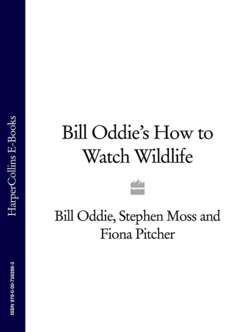Читать книгу Bill Oddie’s How to Watch Wildlife - Stephen Moss - Страница 14
ОглавлениеB
Using this section
Unlike some hobbies and pastimes, wildlife watching truly is a year-round activity. Whatever the season, be it spring, summer, autumn or winter, there will be something to see and enjoy. So the middle section of this book is a month-by-month calendar, featuring the very best of British wildlife and stating how, where and especially when to look for it.
Each month is divided into four main sections:
Where to go … Places to visit where you can enjoy a range of wildlife, together with a map helping you to find them!
How do I see …? Hints and tips on how to see a particular creature, from otters to ospreys, red squirrels to golden eagles, and hares to kingfishers.
Things to do … These include learning bird songs and calls, creating a garden pond and moth trapping – all of which will enhance your pleasure and understanding of Britain’s wealth of wildlife.
Look out for … A brief list of other things to look out for at this time of year.
You can use these month-by-month accounts to plan trips in your local area and further afield; to have an idea of what you might see; or just to get a better understanding of the annual cycle of nature.
One other thing – it’s important to understand that nature’s seasons are not exactly like our own. For example, the breeding season for birds, which we traditionally associate with spring, can begin before Christmas and go on well into the following autumn, depending on the species involved. Likewise, ‘spring migration’ can run from late February, when the first sand martins and wheatears appear, to June, when some waders are still heading north to the Arctic. ‘Autumn migration’ lasts even longer, with the first returning birds passing through in July, while the final stragglers may not depart until November.
Winter is a strange concept in nature too. While hard winters with ice and snow may well have an effect on resident birds and mammals, the recent run of very mild winters means that activity may be going on virtually all year round. Mild weather in February can see the emergence of hibernating butterflies, such as small tortoiseshell and brimstone, while common frogs seem to be laying their spawn earlier and earlier each year, and blossom is appearing on the trees several weeks before we would expect it.
Much of this is undoubtedly due to the effects of global climate change, potentially one of the greatest threats facing us and our wildlife. At this early stage, it is hard to gauge its long-term consequences, but it is worth being aware that as our seasons change, so our wildlife will change with them.
In the meantime, many of our wild creatures continue to follow the changes in the seasons, allowing us wildlife watchers to enjoy them in all their glory – so go on, go out and do so!
